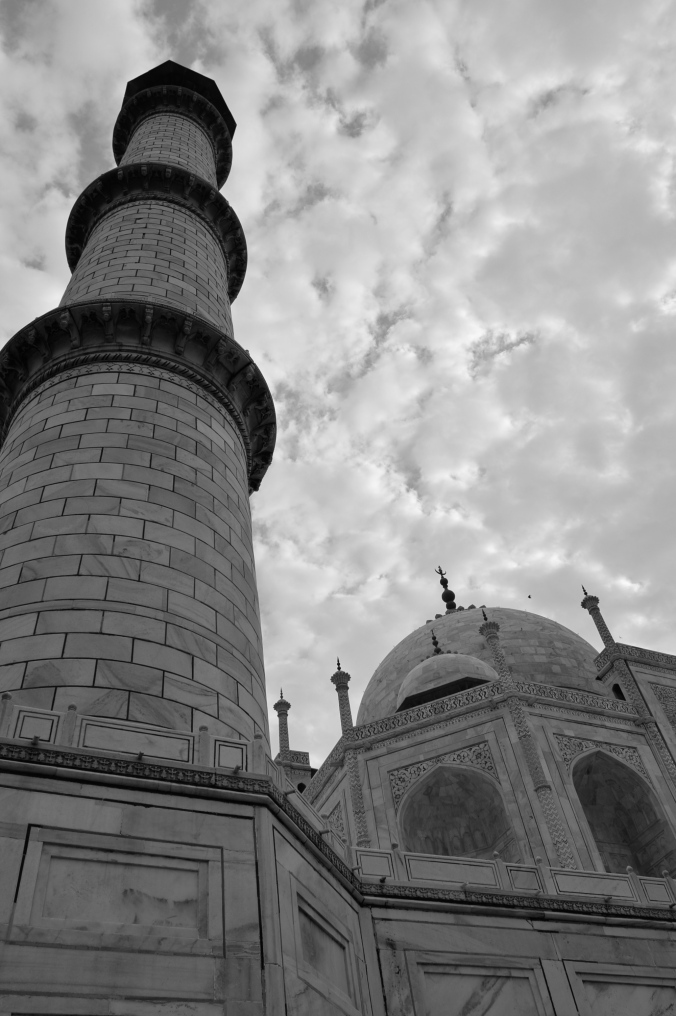
The almighty Taj Mahal
We all have our bucket lists. Mine has never been very full, but there have always been several things on my list for quite some time. I am thankful to now be able to check off my absolute number one.
The Taj Mahal has been my number one for as long as I can remember. From the first photos I saw as a child to repeated images on TV and in films, it has always captivated me. First thing was always the absolute perfectness of it. It is, in my opinion, the most perfect thing ever created by man. It is the most perfect piece of architecture ever constructed or conceived of by man. It is pure perfection. From the details on how the minarets actually lean away from the main structure, not only to keep them visually straight but just in case there was an earthquake, they will fall away from the main structure. They had the wherewithal to keep this in mind in 1632!
Photography inside is forbidden, which is a shame. This is where a nice photo book from one of the shops nearby can come in handy. The tombs were also off limits, due to current geopolitical and seemingly human wanton self-destruction, i.e., terrorism.

It starts to grab you from a distance, through the arched entrance of the Great Gate
One of the most striking and awe-inspiring moments is when you walk through the main entrance gate, the Great Gate or Darwaza-i rauzaa in a bit of a vaulted tunnel effect, and see the Taj for the first time with your own eyes. It is larger in real life than you get from photos. It is larger than life.
Amazingly, you don’t really see the Taj Mahal from the surrounding roads or even when walking through the entrance and ticket complex. You only get it when you enter into the Great Gate.
Built nearly four hundred years ago by Shah Jahan, the Mughal emperor as a mausoleum for his cherished wife Mumtaz, the marble monument was hailed by India’s only Nobel Prize-winning writer, Rabindranath Tagore, as “a teardrop on the cheek of Time.”
Once you’ve spent time admiring the reflective pools in front and made your way to the base platform that the Taj Mahal sits on, do you get to see two other buildings, flanking it. The red sandstone buildings are nearly identical, one to the West, the other to the East.
The Western building is a Mosque, and the Eastern is called a jawab, or answer. The jawab was built to mirror the Western building. Ah, symmetry.
Taking 12 years to complete, the Taj Mahal was built with translucent white marble from Rajasthan, jasper from Punjab, jade, and crystal from China, turquoise from Tibet and Lapis lazuli from Afghanistan, while sapphire came from Sri Lanka and carnelian was sourced from Arabia.
The color of the marble is enhanced by the alcoves, in which, the shadows created within add depth and texture. The carvings, reliefs, and inlays are something you have to see with your own eyes. Incredible Arabic calligraphy forms artistic patterns on nearly every wall. Photography can only go so far in giving you an idea of what it is really like.
I could have stayed there all day. If we had the opportunity to be there at a better time of year, I would have. I would have gone first thing in the morning, to get the best light. I would have stayed until sunset to get the effect that would have on the white marble. Unfortunately, it was extremely hot and humid and I was soaked before we got in the gate. It was also very overcast so the photos I wanted to take will have to wait for next time.
And there will be a next time.
Click on the following images for larger, more detailed views.
Copyright 2019 Michael Roseberry. Photos taken with
Nikon D3300.



































